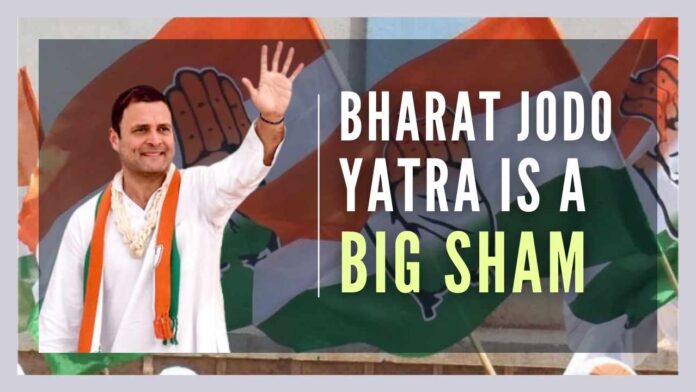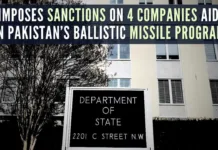
Joining the past dots of Congress
India was fortunate in having among her leaders’ man like Sardar Patel, who was well versed in nation-building matters. It was his able, effective and skillful leadership that integrated 550-odd princely states, barring J&K, into India. The process was almost smooth. He would have integrated J&K as well in 1947 itself, had PM J L Nehru, who also held Foreign Affairs Ministry, not delinked it from the State Department (Home Ministry) under Patel and brought it under his own foreign office as if J&K was a foreign country. It was none other than PM Narendra Modi and his Home Minister Amit Shah, both from Gujarat like Patel, who brought the subversive Kashmiri leadership to the nation’s knees and integrated J&K fully into India on August 5-6, 2019 with both the Houses of Parliament, including Rajya Sabha where the BJP didn’t have the majority, supporting their epoch-making constitutional changes.
Sadly, however, in between, India witnessed from to time unsettling and divisive developments – developments that posed a live threat to national unity and the country’s sovereignty, created a schism in the Indian society, and accorded preferential and differential treatment to certain religious communities leaving in the lurch the majority community.
A brief reference to a few instances in this regard would be quite an in order. For example, on December 31, 1948, the then Union Government allowed the newly-created Pakistan out of India to grab Jammu province’s 13,297 sq km land area, now called PoJK, and Ladakh province’s Gilgit-Baltistan region by enforcing a unilateral ceasefire and at a time when our chivalrous Army had the Pakistani invaders (regular and irregular) on the run. In between, the emboldened Pakistani leadership converted 100% of the whole of the illegally-occupied areas of J&K with thousands and thousands of Hindus and Sikhs migrating to Jammu and other parts of the country to save their lives, culture, religion, and dignity. No wonder then that many call Jammu city the “Indian capital of refugees”.
Not content with all this, in October 1949, the Indian Constituent Assembly adopted Article 306A (Article 370) without any discussion. It under the diktats of Nehru overlooked the unambiguous warning that the “grant of special status to Kashmir on the score of religion will enable it to assume independence afterward”. Article 370 drove the people of J&K away from the national mainstream and made many Kashmiris, barring non-Muslims, believe that they were a race apart having nothing to do with India and things Indian, including the Indian Constitution.
In 1954, the then Government of India went a step further to create a wall of hatred between Kashmiris and the rest of the Indians. It bypassed the Indian Parliament and applied Article 35A to J&K on May 14, 1954, retrospectively w.e.f. May 14, 1944, when India was still under UK and J&K a princely state. This Article negated the very spirit of the preamble of the Indian Constitution and declared all the non-Kashmiris a persona-non-grata in J&K. It was done to empower the sectarian Kashmiri leadership to deny the Hindu-Sikh refugees from Pakistan languishing in different parts of Jammu province since their migration in 1947, Gurkhas living in Jammu since decades, Valmikis from Punjab residing in Jammu since the 1950s and many others the right to vote, right to immovable property, right to education, right to the bank loan, right to a government job and so on.
The year 1962 also witnessed India losing a substantial chunk of J&K’s land in the trans-Himalayan Ladakh to China. To be more precise, the Government of India virtually allowed China to occupy 38,000 sq km of Ladakh province’s area. The entire opposition assailed the government for a “lack of military preparation” during the parliamentary debate on the issue. Several books written by strategic affairs experts are there which criticize PM Nehru’s “mishandling of India-China relations”.
Just three years later (1965), the nation witnessed the Indo-Pak war due to Pakistan’s Operation Gibraltar calculated to infiltrate forces into J&K. The Indian Army inflicted a crushing defeat on Pakistan and captured many areas of Pakistan and areas in PoJK, including the highly strategic Haji Pir Pass. The outcome of the war was considered a “politico-strategic victory of India”. But under Pressure UNSC and USSR, the splendid military victory was converted into a diplomatic defeat in the sense that Pakistan got back all the areas, including Haji Pir Pass the Indian Army had captured after making supreme sacrifices. The Tashkent (now in Uzbekistan) Declaration signed by the Indian PM L B Shastri and Pakistan President Ayub Khan on January 10, 1966, shocked the Indian PM, who suffered a fatal heart attack on February 11 at Tashkent itself and left the world.
As if all this was not enough, the Government of India created a three-front situation for India in 1971 by helping the leadership of East Pakistan establish out of Pakistan an independent and sovereign Bangladesh. The creation of Bangladesh led to demographic changes on a massive scale in West Bengal, Assam, nay the entire northeast, and other parts of the country. According to one estimate, over one crore Bangladeshis entered India after the creation of Bangladesh and the nation has been paying through its nose ever since then. Before 1972, the leadership of East Pakistan and West Pakistan was up against each other: West Pakistan struggled to retain its control over East Pakistan and East Pakistan struggled to achieve independence from West Pakistan.
The worst happened during the UPA rule. Thousands of Rohingyas from Myanmar crossed over to India after 2008. Instead of pushing them back, the Government of India settled them in different parts of the country, including Jammu district, and that, too, at strategic locations – near army camps, railway stations, high hills along the national highway, and even inside Jammu city. The Myanmar Buddhists threw almost all the Rohingya out of the country as they were striving to convert the Rakhine State into an independent Islamic State through terror and violence. All the strategic affairs experts express grave concern over the settlement of Rohingyas – apart from Bangladeshis — in India, saying that “they pose a threat to national security”. Some of them have even said that “they are ticking bombs” and they must be deported from India without losing a moment. Shockingly, many Rohingyas and Bangladeshis have got Aadhar Cards, Ration Cards, SIM Cards, Voter ID Cards, and even Indian Passport and set up business establishments in different parts of the country, including Jammu City.
Not just this, there are elements in political parties in India, especially the Congress, who openly flirt with Pakistanis and Chinese and seek their support to destabilize India by bringing down the Narendra Modi government. Is it not a fact that senior Congress leader and former Minister Mani Shankar Aiyar said during a panel discussion on a Pakistani news channel on November 17, 2015, that “PM Narendra Modi needs to be removed if talks between India and Pakistan have to resume”, that “bring us (the Congress) back to power and remove them”, that “there is no other way (to better the relations), and that “we will remove them, but till then you (Pakistan) have to wait”. And, again, is it not a fact that the former AICC president “Rahul Gandhi, Congress general Secretary Priyanka Gandhi and senior Congress leader Anand Sharma were conducting secret meetings with Chinese envoys at a time when the Indian and Chinese troops were engaged in a stand-off in Doklam in 2017”.
And the memories of the support the JNU students, who raised “Bharat Tere Tukde Honge, Inshallah” within the premises of the campus in 2016 got from all “progressive-secular” outfits, including Congress, CPI, CPIM, AAP, SP, NC, PDP, RJD and TMC and ultra “liberal” elements in the so-called civil society groups are too fresh to be forgotten. Similarly, the memories of the unstinted and unqualified support extended by the same ultra “liberals” and “progressive-secular” outfits to the critics of the Citizenship Amendment Act (Shaheen Bagh protests, coupled with violence in different parts of India, between December 15, 2019, and March 24, 2020) still linger in the nation’s mind.
If the above-referred to events and developments adversely impacted national security and Indian integrity and unity, the Places of Worship Act 1991, which denied the Hindus the right to reclaim their ancient temples and shrines; the creation of the Ministry of Minority Affairs out of the Ministry of Social Justice and Empowerment on January 29, 2006; special scholarship and other schemes exclusively for certain religious communities; denial of minority rights to minority Hindus in nine Hindu-minority states and UTs, including J&K, to mention only a few, widened the gulf between the communities.
These constitute only a few of the several such instances which only serve to demonstrate that there are forces across India who have been working overtime to negate what Sardar Patel, Narendra Modi, and Amit Shah did to unify India. They have been seeking to destabilize India through violence and protests and promote the cause of the enemy nations and hurt the majority community. It’s hoped that Rahul Gandhi, who on Monday, September 7, launched Congress’s five-month-long “Bharat Jodo Yatra” from Kanyakumari to Kashmir, would look all these facts in the face and tell the nation who actually the enemies of national unity are; who have been working day and night to break India into smithereens failing which it will be construed that the whole exercise is a big sham.
Note:
1. Text in Blue points to additional data on the topic.
2. The views expressed here are those of the author and do not necessarily represent or reflect the views of PGurus.
PGurus is now on Telegram. Click here to join our channel and stay updated with all the latest news and views
For all the latest updates, download PGurus App.
- ‘Kashmir My core constituency’: Revisiting July 12, 2003 to understand politics, Omar Abdullah-style - March 15, 2024
- Total deviation from traditional approach: Seven takeaways from PM Modi’s March 7 Srinagar visit - March 9, 2024
- Status of political parties: Why is further J&K reorganization imperative? - March 1, 2024











All the above events and actions have under laying element of corruption. This approach of appeasement of a specific block of the population kept them away from objecting to the corruption. The Bharat Jodo Yatra, is like saying everything should be good without specifics or a vision. Rasta, Sadak, Pani, more jobs, inflation, prices have always been issues for every election, but no Government has ever fallen on these issues. What led to fall of the governments is the corruption. The Khichadi Governments forms and survived for want of a credible and trustworthy alternative. The members of such Khichadi Governments loved it of the because disproportionate power yielded by them under the threat of blackmail giving them every opportunity to rob the people with impunity. This is the real logic behind the strong opposition. Never heard a single constructive, honest suggestion from even from this week opposition. There unhappy souls in the ruling dispensation and of course in opposition with no chance of making money and their frustration comes by way of wanting a wider group to take decisions i.e. allowing to suggest loop holes. These people have no idea as how a tight ship is run. They should be glad that they are being tolerated.